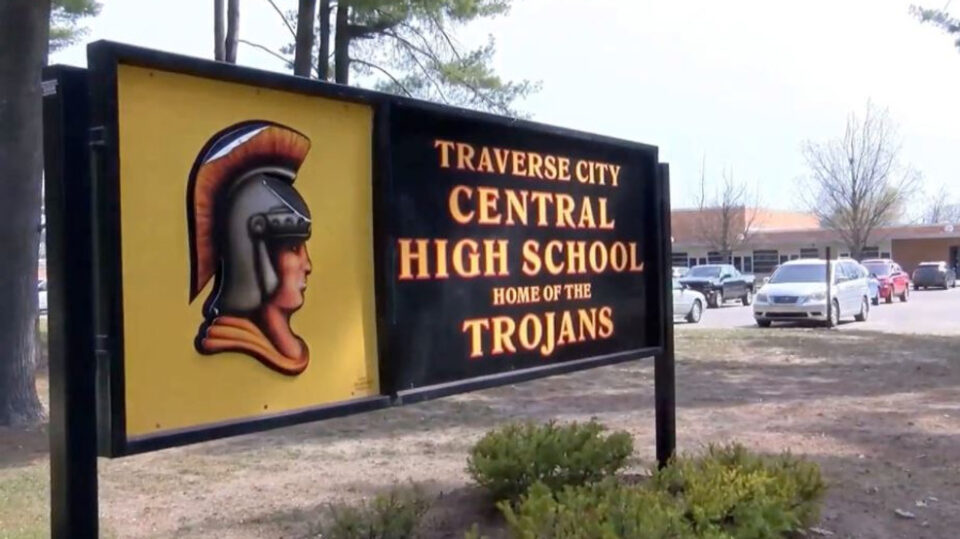Newspaper Publicized the ‘Uncomfortable Truth’
Media Fare Better Under Biden, but Issues Remain
Exits From NPR More Complex Than Some Think
In Ala., Mentally Ill First in Line to Be Executed
N.Y. Times to Bring Diversity to Crosswords
Ida B. Wells Joins Lineup of Barbie Dolls
Bolden Named CEO at American Press Institute
Parquet-Taylor to Reimagine Local News for CBS
‘Strange Fruit’ Led to Backlash in Mainstream Press
Native Americans Getting More Robust Coverage
Passings:
Joe Bell, Producer in Dallas
Delma J. Francis, Reporter in Minneapolis
Shawki Moore, Television Photographer
Bill Price, Cincinnati Reporter-Anchor
Rudolph Pyatt Jr., Washington Post Journalist
Short Takes: Cable-news ratings by show; impact of racial-justice protests on coverage; mental health vs. financial stability; Haitian Times to train journalists; traffic cameras’ impact on Blacks, Latinos; tolerance of Rikers Island prison fights; sentencing of neo-Nazi group member; Aja Williams; Sara Sidner; new D.C. startup “Grid”; León Krauz; Maiysha Kai; Center for Investigative Reporting; NABJ statement on Black News Channel; discomfort with Black NFL coaches; IRE’s Francisco Vara-Orta; spying on El Salvador news outlet; not guilty plea from N.Y. Times reporter in S. Africa.
Editorial: Arm Our Children Against Racism (Record-Eagle, Traverse City, Mich., April 25, 2021)
Support Journal-ismsNewspaper Publicized the ‘Uncomfortable Truth’
The 20-minute segment on public radio’s “This American Life” last week was introduced thus:
“During her sophomore year in high school, Nevaeh was targeted in a secret text message chain by a handful of her peers. She’d come to learn the text chat was a mock slave trade where her photo and photos of other Black classmates were uploaded, talked about as property and bid on. Emanuele Berry talks to Nevaeh about what these messages mean to her now, and how she’s navigated her town’s reaction over this, and her close friendships with kids who mostly aren’t Black.”
It was part of a package on the backlash under way in the United States just a year after the “racial reckoning” brought on by the murder by Minneapolis police of George Floyd. In this Nevaeh Wharton case, the local newspaper played a central role.
 Executive Editor Nate Payne (pictured) of the Traverse City (Mich.) Record-Eagle told Journal-isms, “It’s not an easy thing to be in any newsroom when you are surfacing uncomfortable truths.”
Executive Editor Nate Payne (pictured) of the Traverse City (Mich.) Record-Eagle told Journal-isms, “It’s not an easy thing to be in any newsroom when you are surfacing uncomfortable truths.”
As described in July by Hannah Natanson of The Washington Post, ” ‘I know how much I was sold for: one hundred dollars,’ said Nevaeh, who is half-Black. ‘And in the end I was given away for free’ — to the friend who first warned her about the group.’ “
Most messages sent over Snapchat, the app used for the offensive discussion in question, are automatically deleted once viewed or expired. But it’s possible to make screenshots.
Natanson continued, “The Snapchat group, titled ‘slave trade,’ also saw a student share the messages ‘all blacks should die’ and ‘let’s start another holocaust,’ according to screenshots obtained by The Washington Post. It spurred the fast-tracking of a school equity resolution that condemned racism and vowed Traverse City Area Public Schools would better educate its overwhelmingly White student body and teaching staff on how to live in a diverse country.
“But what happened over the next two months revealed how a town grappling with an undeniable incident of racism can serve as fertile ground for the ongoing national war over whether racism is embedded in American society.”

“Nevaeh did not just want to know what was said about her in the chat. She wanted everyone to know. She wanted to talk about it. But the message she felt like she kept getting from her school, the police, her friends, from the school board meeting in her town, from the 500-page blacked out FOIA, was we don’t want to talk about this. We don’t want to talk about racism. . . .”
One screenshot showed Nevaeh in a red crop top and jeans and a hat, posing near a tree.
Berry added for “This American Life”:
“Written underneath, ‘Starting bid, $100.’ ‘Ew,’ someone comments. Another ‘ew.’ Followed by another.
“Nevaeh: ‘And then just, then and there, everything hit. I was disgusted to the gut. It was just, like, oh, my gosh. I joked with these students before. I couldn’t believe that they would think of typing something that they thought like it would be OK. After, like, everything with Black Lives Matter this last year, it was just like, wow, OK. It showed me the type of person they were.”
Nevaeh’s mother, Jala Wharton, “emailed all the school board members, went back and forth with school administrators. She felt like no one was taking it seriously. She called the police.
 “The police investigated the group chat. A few weeks later they told Jala that there were no chargeable offenses.”
“The police investigated the group chat. A few weeks later they told Jala that there were no chargeable offenses.”
It was then that Jala went to the Record-Eagle, a daily of 12,000 circulation weekdays and 15,000 Sunday, with about 2 million page views per month. It is based in Traverse City but serving a 13-county area of Northern Michigan. “Our reporter sat down with her and Neveah,” Payne told Journal-isms by telephone Wednesday. “We viewed the screenshots . . . and we knew it was something we had to cover because of its importance to the community.”
The story was the centerpiece of the front page the next day, April 24.
Berry continued, “Instead of disappearing, the story . . . got a lot of attention.
“At first, Nevaeh felt good talking about it. She got a lot of support. People reached out. She felt a sense of relief. But just as quickly, as is happening in many parts of America, talking about racism in Traverse City led to backlash. Nevaeh speaking up set off other, bigger conversations about racism in the community, which led to that heated school board meeting where some adults insisted Traverse City is not a racist place and that any discussion of racism causes division.
“But something that was more important to Nevaeh was the backlash she got from her peers. Some kids started to get tired of seeing Nevaeh on the news. And to Nevaeh, it seemed almost irritated. She noticed a gradual change, even among some of her friends. . . .”
Payne told Journal-isms, “This is a prime example of the role of a newspaper in delving into (an issue) that forces a community to look itself in the mirror and to acknowledge that things like this are happening.”
There were follow up stories, and editorials. “The school district really got very quiet about it,” Payne said. School officials cited the Family Educational Rights and Privacy Act, which affords parents the right to bar disclosure of their children’s education records. But, Payne said, the officials started talking about the issue more seriously, and about diversity, equity and inclusion.
They told Niveah that she could file a Freedom of Information Act request if she sought more information. She did, and so did Berry of “This American Life.” However, most of the relevant information was redacted.

Meanwhile, the school board drafted an “equity resolution” that stated that the school system condemned “racism, racial violence, hate speech, bigotry, discrimination and harassment.” It called for holding more “comprehensive” training for teachers, adding historically marginalized authors to school libraries and reviewing the district’s “curriculum and instruction [to] address gaps . . . from a social equity and diversity lens,” Natanson reported.
But then came concerns about “critical race theory,” the law-school concept that has become a catch-all term for talking about race and racism whether in law school or not. “More than 200 people then crowded into two rooms to listen to 55 people speak during a public comment session” of a school board meeting. “The vast majority of speakers decried the equity resolution as critical race theory, according to public video of the meeting and the Record-Eagle.
“By that time, school board members — wary of the building backlash — had already reworked the document. The second version lacks the line about applying a ‘social equity and diversity lens’ to the curriculum. It also no longer suggests the district will add ‘marginalized’ authors to their libraries, nor that Traverse City schools will give students more opportunities to learn about ‘diversity, equity, inclusion and belonging issues.’
“Officials furthermore deleted the terms ‘racism’ and ‘racial violence’ from a list of things the school district condemns. Also deleted is a passage that stated ‘racism and hate have no place in our schools or in our society.’ “
Payne told Journal-isms, “I don’t think the story will ever be over in this context,” though for some, the battle has moved to masking vs. non-masking in the fight against COVID.
Still, the Record-Eagle is preparing another story on how race and racism are being taught.
Initiating such conversations is “a weight,” Payne said.
“People who are in journalism are in it for a reason, much more today than 10 years ago. There are too many factors that drive people out of local journalism. The people who are here are committed. They see what delivering unvarnished truth to their community means.”
A Record-Eagle editorial on the subject appears at the end of this column.
- Jeffrey Barg, “The Grammarian,” Philadelphia Inquirer: How ‘cultural Marxism’ and ‘critical race theory’ became dangerously misunderstood (Jan. 4)
- Tat Bellamy-Walker, NBCBLK: Book bans in schools are catching fire. Black authors say uproar isn’t about students. (Jan. 6, updated Jan. 8)
- Charles M. Blow, New York Times: The G.O.P. Is Making ‘Critical Race Theory’ the New ‘Shariah Law’ (Jan. 5)
- Editorial, Free Press, Mankato, Minn.: Being American not strictly a white thing
- Lindsay Pérez Huber, the Conversation: Rooting out racism in children’s books (Jan. 4)
- Ruben Navarrette Jr., Washington Post Writers Group: Latinos have earned what they crave most: respect (Jan. 5)
- Sudhin Thanawala, Associated Press: King’s daughter slams twisting of critical race theory
Media Fare Better Under Biden, but Issues Remain
“One year into office, President Joe Biden’s administration has emphasized the importance of global press freedom and improved daily relations with U.S. media – but has yet to turn many promises into action, according to a special report by Leonard Downie Jr. for the Committee to Protect Journalists,” the press-freedom group said Thursday.
“The report, ‘Night and day’: The Biden administration and the press, finds an almost complete reversal of the Trump administration’s hostile anti-media rhetoric and a return to a more traditional relationship between the press and the White House. However, while journalists and press freedom advocates welcome the administration’s commitment to keeping the public informed, the report found that they see persistent problems, including issues like the backlog of freedom of information requests, restrictions on journalists at the U.S. southern border, and the use of the Espionage Act against Wikileaks founder Julian Assange.”
However, Downie said in introducing the report at a Zoom news conference, while the Biden administration of course treats the news media better than did the Trump administration, it also does better than the Obama administration.
 “At the Department of Justice, Attorney General Merrick Garland (pictured) – at Biden’s direction – has stopped federal subpoenas of reporters’ telephone and email records to find government sources of classified government information, an unprecedented number of whom were prosecuted and imprisoned during the Trump and Obama administrations.
“At the Department of Justice, Attorney General Merrick Garland (pictured) – at Biden’s direction – has stopped federal subpoenas of reporters’ telephone and email records to find government sources of classified government information, an unprecedented number of whom were prosecuted and imprisoned during the Trump and Obama administrations.
“There have been no new federal prosecutions of such sources to date under Biden. Instead, the Justice Department is investigating and prosecuting people who physically attacked journalists during the violent, Trump-inspired invasion of the U.S. Capitol in Washington on January 6, 2021. And it is investigating abusive treatment of reporters by police in Minneapolis, Louisville, and Phoenix.”
Administration-wide, Downie also pointed out, too many interviews are on background, which hurts press credibility because without names attached, critics can simply call the stories “fake news.”
Among the many other points made, “Structural or substantive changes to address the plight of endangered journalists are lacking, the report found. Press freedom advocates were especially critical of the chaotic evacuation and handling of Priority 2 (P-2) visas for journalists under threat in Afghanistan following the U.S. withdrawal and Taliban takeover in August 2021, as media companies and organizations like CPJ had to work with other governments to extract journalists facing imminent danger.
“The Biden administration still has an opportunity to help Afghan journalists by swiftly processing P-2 visas and by providing assistance for those who fled to safety or remain in the country, reporting in defiance of a repressive Taliban,” said Robert Mahoney, CPJ deputy executive director.

Exits From NPR More Complex Than Some Think
“In the wake of a trio of departures, news stories and private messages shared among NPR staffers reflected the concern that Black and Latina stars are leaving the network in droves,” David Folkenflik reported Tuesday, updated Wednesday, for NPR.
“In November, Weekend Edition Sunday host Lulu Garcia-Navarro left to host a podcast for the New York Times opinion section. In December, Noel King departed Morning Edition and Up First for Vox. Last week, All Things Considered and Consider This host Audie Cornish decamped to be a host for CNN’s new streaming service.
Folkenflik also wrote, “Interviews with 11 people with direct knowledge of recent developments, including NPR hosts and executives, suggest NPR indeed struggles to retain high-profile journalists of color. Hosts have complained to the network’s leadership of pay disparities along racial and gender lines. Some say the network does not keep its promises and makes contract negotiations unnecessarily contentious. And several hosts concluded they were made to be the public face of NPR but did not have the network’s full support.
“Yet the interviews also yield a more complex picture.
“Major changes within the industry have shifted where many journalists’ ambitions lie. Hosting a traditional radio program no longer holds the same allure it did a generation ago, or even a decade ago. For many, it’s now a combination of old-school prestige and daily grind in an era of unrelentingly grim headlines. . . .”
- Lindsey Ellefson, The Wrap: Tonya Mosley to Exit NPR, Joining Exodus of Black Hosts
- Kelly McBride, NPR public editor: 4 NPR hosts quit in the last year, 3 were women of color: What’s going on and what should NPR leadership do?
In Ala., Mentally Ill First in Line to Be Executed
 “Meet Matthew Reeves (pictured), an intellectually disabled Black man like Willie Smith was, now scheduled by the Alabama Supreme Court to be executed by lethal injection,” Stephen Cooper, a former District of Columbia public defender who worked as an assistant federal public defender in Alabama, wrote Jan. 5, updated Friday, for the Montgomery (Ala.) Advertiser.
“Meet Matthew Reeves (pictured), an intellectually disabled Black man like Willie Smith was, now scheduled by the Alabama Supreme Court to be executed by lethal injection,” Stephen Cooper, a former District of Columbia public defender who worked as an assistant federal public defender in Alabama, wrote Jan. 5, updated Friday, for the Montgomery (Ala.) Advertiser.
“Reeves will be strapped to a gurney and pumped full of noxious chemicals on January 27 for a murder he committed when he was just eighteen — twenty-five years ago.
“The Advertiser’s Brian Lyman reported in November: ‘Reeves’ attorneys have argued that he (has) intellectual disabilities, with an IQ score in the 60s.’ Further, Lyman observed ‘Reeves is pursuing a separate motion saying his intellectual disability prevented him from opting into execution by nitrogen hypoxia during a brief window in 2018 when the method was offered to death row inmates.'”
On Friday, Reeves won a delay. Judge R. Austin Huffaker of the U.S. District Court for the Middle District of Alabama granted a preliminary injunction preventing Alabama from executing Reeves ‘by any method other than nitrogen hypoxia,’ deathpenaltyinfo.org reported on Monday, citing al.com.
“Huffaker found that Reeves is likely to succeed in his claim that the state violated the Americans with Disabilities Act (ADA) when prison officials failed to offer him assistance to understand a form they distributed that required him to designate a method of execution.”
However, returning to Lyman, Cooper wrote, “Prophetically, Lyman wrote that Willie Smith raised ‘similar issues in his case, but a federal appeals court ultimately rejected them, (and) Smith was executed.’ . . .”
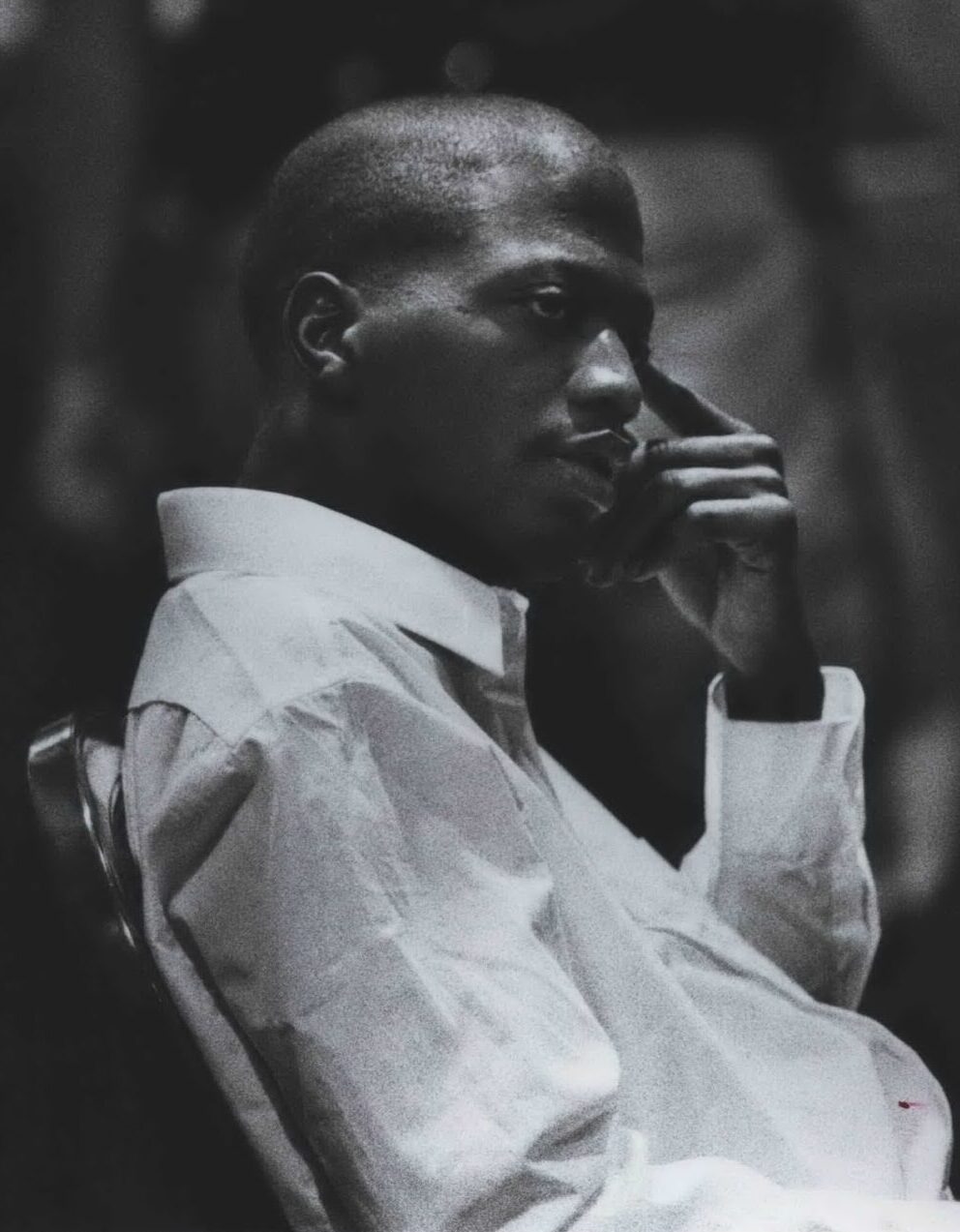 Cooper said that Willie B. Smith III (pictured), a brain-damaged Black man whose execution was stayed several months before ultimately being carried out in October. . . . I wrote that Smith’s execution was a step backward for racial equality in Alabama — and America — and clearly, it was.”
Cooper said that Willie B. Smith III (pictured), a brain-damaged Black man whose execution was stayed several months before ultimately being carried out in October. . . . I wrote that Smith’s execution was a step backward for racial equality in Alabama — and America — and clearly, it was.”
Cooper also wrote, “Alabama has been torturing poor people for a long time with its discriminatory and disgusting death penalty. But, at this moment in history, as the state finalizes its protocol to gas its condemned citizens to death — casting a ghoulish pall over Alabama and America — the despicableness of modern day capital punishment has sunk to a shockingly sad, demoralizing new low; mentally ill human beings in Alabama are being put to death first, before other condemned prisoners, primarily because they’re mentally ill. . . .”

N.Y. Times to Bring Diversity to Crosswords
“The New York Times announced a new fellowship for crossword constructors on Monday aimed at increasing the number of puzzles created by underrepresented groups, including women, people of color, and those in the LGBTQ community,” Sarah Scire reported Tuesday for Nieman Lab.
“The New York Times Diverse Crossword Constructor Fellowship, which will be open to applications for a month starting Feb. 7, is one answer to criticism that the Times has been slow to diversify its crossword clues, answers, editors, and (yup) stable of constructors.
“ ‘You’ll get a rejection from the Times saying, “This is not something that the average solver will know,” which carries with it this connotation that an average solver is a white man in his 50s,’ one crossword constructor told me last year. ‘There’s an expectation that the person solving your puzzle looks like Will Shortz.’ (Until editors Wyna Liu and Tracy Bennett were hired in 2020, the Times puzzle team consisted of three white men.) . . .”
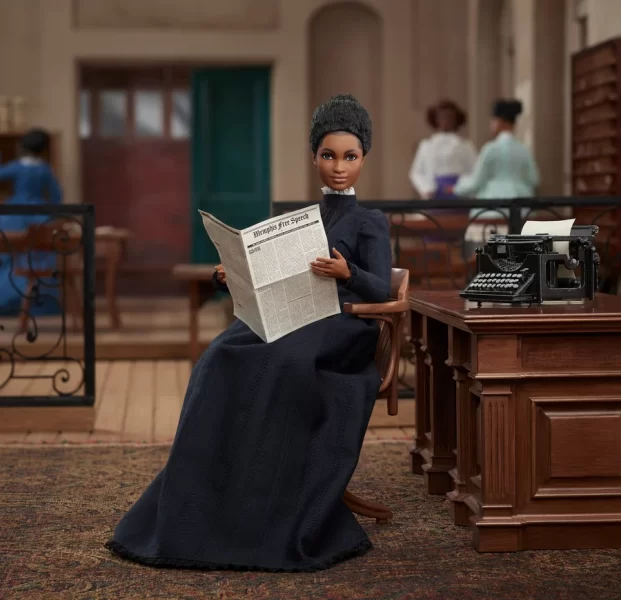
Ida B. Wells Joins Lineup of Barbie Dolls
“Educator, journalist, anti-lynching activist and NAACP co-founder Ida B. Wells joins the pantheon of distinguished women honored by Mattel with her own signature Barbie doll,” Elizabeth Blair reported Tuesday for NPR.
“Resplendent in a deep blue, floor-length dress with lace details, the new Ida B. Wells doll also comes with a historically significant accessory: a miniature replica of the Memphis Free Speech, the newspaper where Wells became editor and co-owner in 1889.
“Mattel has created numerous Barbie dolls to honor both historic and contemporary heroines in the hopes of inspiring ‘generations of girls to dream bigger than ever before.’ It’s Inspiring Women Series includes dolls dedicated to Maya Angelou, NASA mathematician Katherine Johnson and singer Ella Fitzgerald. . . .”
Bolden Named CEO at American Press Institute
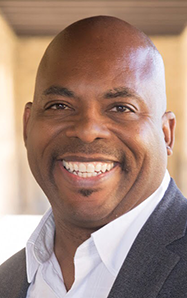 Michael D. Bolden (pictured), a veteran of the San Francisco Chronicle, The Washington Post and the John S. Knight Journalism Fellowships program, has been named executive director and CEO of the American Press Institute, the institute announced Tuesday.
Michael D. Bolden (pictured), a veteran of the San Francisco Chronicle, The Washington Post and the John S. Knight Journalism Fellowships program, has been named executive director and CEO of the American Press Institute, the institute announced Tuesday.
Bolden succeeds Tom Rosenstiel, who after leading API since 2013, joined the University of Maryland Philip Merrill College of Journalism last fall as Eleanor Merrill Visiting Professor on the Future of Journalism.
API, an affiliate of the News Media Alliance, the major organization of newspaper publishers, is “dedicated to helping news publishers navigate and adapt to organizational and industry change to sustain journalism.”
Bolden, currently director of culture and operations at the San Francisco Chronicle and a member of the newsroom’s executive leadership team, said in a blog post, “Journalism has too often functioned as a closed ecosystem, with limited access to talent and ideas. That world can’t exist any longer, not if we want to reach new audiences and serve the ones our industry has neglected for far too long.
“In this time of uncertainty, our diverse, multicultural society needs great journalism and the pursuit of truth more than ever, and the team at the American Press Institute stands at the forefront of guiding news organizations through this fog of constant change. . . .”
Parquet-Taylor to Reimagine Local News for CBS
 “CBS Stations is launching a local news innovation lab with a focus on ‘next-generation storytelling’ out of two ViacomCBS-owned stations in Dallas-Fort Worth, Tex.,” Jennifer Maas reported Tuesday for Variety.
“CBS Stations is launching a local news innovation lab with a focus on ‘next-generation storytelling’ out of two ViacomCBS-owned stations in Dallas-Fort Worth, Tex.,” Jennifer Maas reported Tuesday for Variety.
“Based at KTVT-TV and independent sister station KTXA-TV, ‘The lab will serve as the home of a curated team of CBS News and Stations employees including several new hires, who will be empowered to experiment with next-generation storytelling, such as data journalism, and test new products, workflows and production models for the future.’
“Award-winning local news executive Chad Cross . . . will serve as a senior leader at the lab as vice president, content development, CBS Stations. Andrea Parquet-Taylor (pictured) will transition from her current role as vice president and news director at ViacomCBS’s KCBS-TV and independent sister station KCAL-TV in Los Angeles to lead the first initiative that will be developed at the lab in Dallas-Fort Worth. . . .”
- Alexandra Steigrad, New York Post: CBS News staffers are chafing under ‘rude,’ cost-slashing new boss Neeraj Khemlani
“Southern trees bear a strange fruit/ Blood on the leaves and blood at the root/ Black body swinging in the southern breeze/ Strange fruit hanging from the poplar trees.” (Credit: YouTube)
‘Strange Fruit’ Led to Backlash in Mainstream Press
Billie Holiday’s signature song from 1939, “Strange Fruit,” a chilling protest of the lynching of African Americans, so offended many in the mainstream press that they sought to undermine her career. That’s according to the latest installment of “Printing Hate,” the University of Maryland project on the historic role of newspapers in fueling racial hate and violence.
Even as Holiday’s jazz stardom grew, the account says, her influence as a civil rights activist became overshadowed by press reluctance to print anything but her run-ins with the law.
“They would write about Billie being a drug addict,” said British writer Julia Blackburn, author of “With Billie,” as quoted by Anuoluwapo Adefiwitan, Julia Arbutus, Molly Cuddy and Lindsay Garbacik of the Howard Center For Investigative Journalism. Holiday dealt “with her fear of racism and her fear of being intimidated and incarcerated by singing her songs, and ‘Strange Fruit’ was the cornerstone.”
“She was a high-profile figure, and they wanted to break her,” said Blackburn. “She had to be made into a useless, drug-taking, stupid woman, because that then stops the power of this song.”
- Robert Meeropol, Time: My Father Wrote ‘Strange Fruit.’ The Capitol Rioters Had a Lot in Common With the Lynch Mobs That Inspired That Song (March 5, 2021)
Native Americans Getting More Robust Coverage
 “Kiowa tribal member Tristan Ahtone (pictured) remembers just getting started in journalism over a decade ago and pitching ideas on Indigenous topics. His bosses would say things like: ‘We ran a Native story earlier this year. Do we need another one?’ ” Katie Oyan reported Tuesday for the Associated Press.
“Kiowa tribal member Tristan Ahtone (pictured) remembers just getting started in journalism over a decade ago and pitching ideas on Indigenous topics. His bosses would say things like: ‘We ran a Native story earlier this year. Do we need another one?’ ” Katie Oyan reported Tuesday for the Associated Press.
“Thankfully, he said, times have changed.
“ ‘Nowadays there’s not enough content to fill demand, which is fantastic,’ said Ahtone, a former longtime Native American Journalists Association board member and current editor at large at nonprofit media outlet Grist.
“Native American communities have seen more robust news coverage in recent years, in part because of an increase in Indigenous affairs reporting positions at U.S. newsrooms and financial support from foundations. . . .”
 Meanwhile, two months after Apsaalooké journalist Luella Brien (pictured) quit her job at Big Horn County News in a huff, she launched Four Points Press, an independent digital media company covering the Crow Indian Reservation in Big Horn County, Montana, Kelsey Turner reported Friday for Native News Online.
Meanwhile, two months after Apsaalooké journalist Luella Brien (pictured) quit her job at Big Horn County News in a huff, she launched Four Points Press, an independent digital media company covering the Crow Indian Reservation in Big Horn County, Montana, Kelsey Turner reported Friday for Native News Online.
“Brien, who lives on the reservation with her family, is Points’ owner, operator, and reporter. Three board members help with content management and fundraising.
“Montana’s local news outlets have historically had inadequate coverage of Native news.
“Throughout her career, Brien has often seen journalists cover tribal news with no true understanding of Native communities.
“ ‘They build their fame, pad their resumes and make something of themselves off the backs of these Native peoples,’ she said. ‘People feel like they’re being used.’ . . .”
- Kolby Kickingwoman, Indian Country Today: ‘Strong editing power’: Dalton Walker and Dianna Hunt promoted to positions that ‘are crucial in the daily rhythm of the digital newsroom’
Passings
Joe Bell, Producer in Dallas
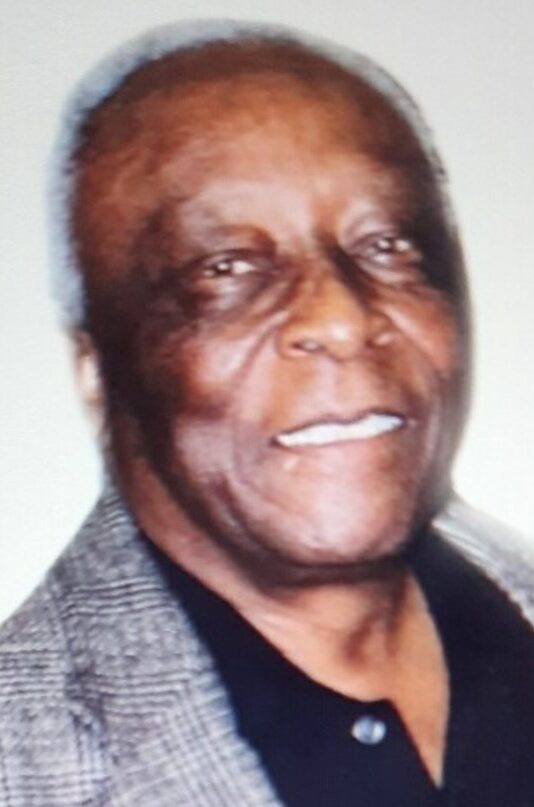 “An equivalent of the biblical ‘so great a cloud of witnesses’ took over my brain as I rummaged through memories of scores of Dallas-Fort Worth-area Black pioneer journalists whose names are foreign to generations of newcomers,” Norma Adams-Wade, retired Dallas Morning News senior staff writer, reported Jan. 4 for the Dallas Morning News.
“An equivalent of the biblical ‘so great a cloud of witnesses’ took over my brain as I rummaged through memories of scores of Dallas-Fort Worth-area Black pioneer journalists whose names are foreign to generations of newcomers,” Norma Adams-Wade, retired Dallas Morning News senior staff writer, reported Jan. 4 for the Dallas Morning News.
“Joseph ‘Joe’ Bell (pictured), who died Dec. 15 at age 92, was among that mighty cloud. . . . Bell spent 21 years as an executive at KDFW-TV (Channel 4) in Dallas. He was the original executive producer of Insights, which was among the nation’s first public-access TV shows. . . .
“Among public-access shows, Insights enjoyed one of the nation’s longest runs — 29 years — before its last broadcast, June 21, 2009, when Brown was 60. Bell had retired in 1994 at age 65. . . .”
Delma J. Francis, Reporter in Minneapolis
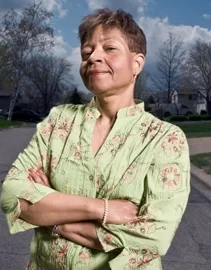 Delma J. Francis, a features reporter and team leader whose career stops included 13 years at the Star Tribune in Minneapolis as well as service on the board of the National Association of Black Journalists, died Saturday, Jan. 1, of organ failure at a Minneapolis hospital, her friend, journalist Felecia D. Henderson, told Journal-isms. She was 68.
Delma J. Francis, a features reporter and team leader whose career stops included 13 years at the Star Tribune in Minneapolis as well as service on the board of the National Association of Black Journalists, died Saturday, Jan. 1, of organ failure at a Minneapolis hospital, her friend, journalist Felecia D. Henderson, told Journal-isms. She was 68.
Francis’ friend Dee DePass wrote on Facebook, “Many of you will remember Delma for her big smile, Kentucky accent, happy disposition, love of young people and her willingness to roll up her sleeves to help people. She was an active member of Twin Cities Black Journalists, NABJ, Delta Sigma Theta Sorority, Inc., had a love of music and sang in several area choirs over the years. She was a friend and mentor to journalism interns near and far. Delma joined the Star Tribune after stints at the Louisville Times, Richmond Times Dispatch, and the Hartford Courant. Delma ran the Strib’s Christmas Toy Drive for years. She loved Christmas and celebrated her birthday on Dec. 16. So December was her month and she made it festive.”
Francis was tested financially when, after taking a buyout from the Star Tribune in June 2007, she was victimized by the Great Recession of December 2007-June 2009. She wrote for MinnPost, for whom she was freelancing, “When I say I’m broke, I mean it — as in $10 to my name until my next unemployment check. You see, I’m the poster child for what the current economy is doing to the middle class. . . .
“One thing my situation has instilled in me is humility. . . . My dream (aside from landing a full-time job) is to testify on Capitol Hill — to put a face on the plight of the middle-class unemployed.”
Francis continued freelancing, worked as a substitute teacher, unsuccessfully ran for a school board seat, and joined seven others in managing a company, The Wordsmith.
The alumni association at Francis’ alma mater, Eastern Kentucky University, noted last year that during Black History Month, “she was honored along with other trailblazers who ‘paved the way’ for the University’s diversity initiatives. A commemorative marker in front of the Keen Johnson Building and a framed photo” were placed in the offices of the Eastern Progress, where she was the first Black editor-in-chief.
Francis was an NABJ regional director during the 1999-2001 term of President Will Sutton, and in 2005 she helped draft a statement of support for Judith Miller, a New York Times reporter who spent 85 days in jail after refusing to testify before a grand jury about a confidential source. The statement also called for a national shield law for journalists.
The Twin Cities Black Journalists has created a Delma Francis Memorial Fund at the Star Choice Credit Union to benefit her daughter, Whitney, who has special needs. Member Number 000031418; Routing Number – 291-075-048. A virtual memorial service is planned, Henderson said. [Added Jan. 14]
(Credit: KOVR-TV)
Shawki Moore, Television Photographer
“The CBS13/Good Day Sacramento family is grieving an enormous loss in our newsroom,” KOVR-TV said on its website. “Our friend, long-time station photographer Shawki Moore passed away Thursday,” Jan. 6. “He was recovering from a major stroke.” “Shawki’s passing has had a profound impact on our newsroom. He passed away at home at the age of 46,” General Manager Mike Dello Stritto messaged Journal-isms Thursday.
Bill Price, Cincinnati Reporter-Anchor
 “Bill Price, a former reporter and longtime anchor for WCPO-TV, has died,” Emily DeLetter reported Monday for the Cincinnati Enquirer.
“Bill Price, a former reporter and longtime anchor for WCPO-TV, has died,” Emily DeLetter reported Monday for the Cincinnati Enquirer.
WCPO reported the news Sunday but did not list the date or cause of death, nor Price’s age.
[Jan. 18 update: Bill Price’s sister, Lauren Price, messaged, “My brother just turned 65 on 12/26/21. He died on 1/8/22 of arteriosclerosis.”]
“According to his LinkedIn profile, Price was employed at WCPO from 1986 to 2012, working as a health and general assignment reporter and anchoring the morning news.
“WCPO reported that Price left the station after 26 years to move to New York to care for his ailing mother.
“His profile also listed him as the former president of the Cincinnati chapter of the National Association of Black Journalists.”
WCPO reported the news Sunday but did not list the date or cause of death, nor Price’s age.
“According to his LinkedIn profile, Price was employed at WCPO from 1986 to 2012, working as a health and general assignment reporter and anchoring the morning news.
“WCPO reported that Price left the station after 26 years to move to New York to care for his ailing mother.
“His profile also listed him as the former president of the Cincinnati chapter of the National Association of Black Journalists.”
Rudolph Pyatt Jr., Washington Post Journalist
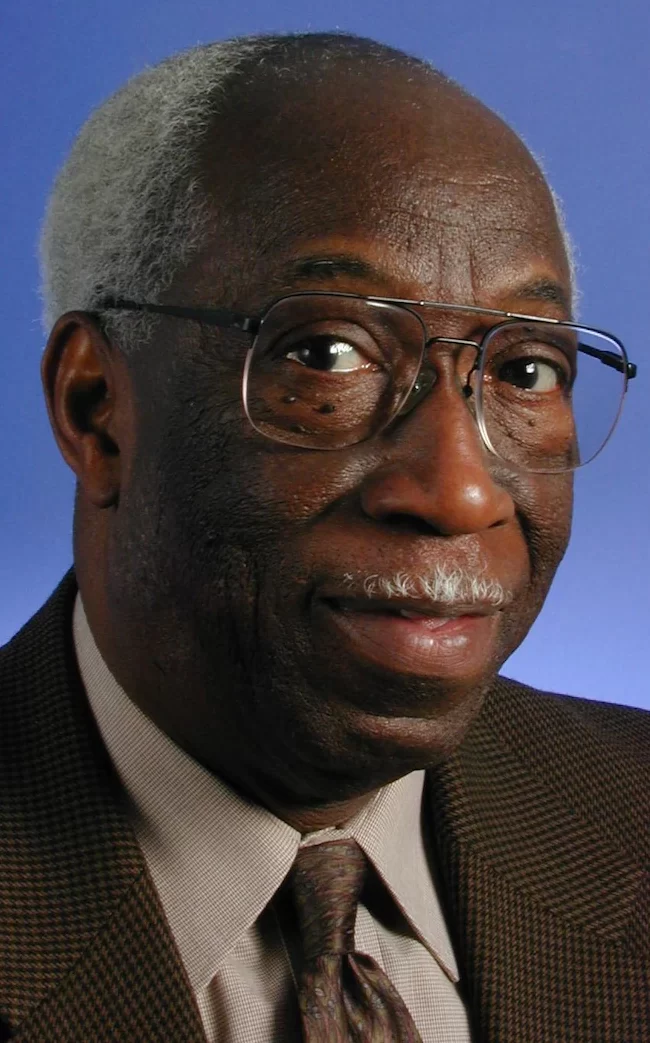 “Rudolph A. Pyatt Jr., a Washington Post journalist who retired in 2000 after 19 years writing a twice-weekly column on local business, died Jan. 7 at a hospital in Clinton, Md,” Bart Barnes reported Thursday for the Post. “He was 88.
“Rudolph A. Pyatt Jr., a Washington Post journalist who retired in 2000 after 19 years writing a twice-weekly column on local business, died Jan. 7 at a hospital in Clinton, Md,” Bart Barnes reported Thursday for the Post. “He was 88.
“The cause was complications of dementia, said his wife, Jacqueline Pyatt.
“Mr. Pyatt was among an early corps of Black journalists that cracked the segregation barriers of Southern newspapers when he began his career in 1964 at his hometown publication, the Charleston (S.C.) News & Courier.
“He became a Washington correspondent in 1968 but soon left for work as a reporter at WETA, the Washington-area public TV station. He also spent a few years as director of public affairs for the D.C. public schools and as a consultant in the Washington mayor’s office before joining the Washington Star as a writer and editor. After the paper closed in 1981, he joined The Post and wrote his business column focused on economic development, taxes, commercial real estate and local government.
“In his farewell column, Mr. Pyatt wrote about changes he had witnessed in the Washington business world and the closing of mainstays such as Garfinckel’s and the Woodward & Lothrop department stores and Perpetual Federal Savings.
“ ‘The old establishment (a close-knit, conservative fraternity) has given way to a new order of corporate princes and princesses, wielding power and influence and flaunting newfound wealth from the headquarters of Internet and telecommunications companies, highly paid consultants’ offices, and, yes, law firms and real estate developers,’ he opined. ‘The area’s economy may be stronger, but things just aren’t the same without the likes of Israel ‘Izzy’ Cohen, who built Giant Food into a retail powerhouse. ‘ . . .”
Short Takes
- MSNBC’s Jose Diaz-Balart and Craig Melvin lag behind their CNN and Fox News competitors in the sought-after 25- to-54 demographic; in Melvin’s case, the cable-news leader for the time slot is Harris Faulkner on Fox. CNN’s Don Lemon and Joy Reid on MSNBC lag behind the competition among that 25-to-54 demographic, with Lemon rising to second place for the slot at 11 p.m. Reid takes second place for her slot among total viewers. No matter how you slice it, though, Fox News is crushing CNN and MSNBC, according to cable news ratings by show this past Monday, published by Mediaite.
- A study from the Media, Inequality and Change Center, “Policing 2020: Local news reporting during a year of protest,” found that local newspapers in Philadelphia, Minneapolis and Louisville, Ky., reflected and responded to the public’s focus on race and policing, Alina Ladyzhensky reported for the Annenberg School of Communication at the University of Pennsylvania. “The researchers observed more inclusive sourcing practices in some of the coverage, less dehumanizing language (e.g., ‘suspect’ and ‘offender’), and greater use of information that challenged the police or helped to situate policing in the context of racial justice. However, the authors say, coverage of policing still continued to reflect narratives that reinforced a police perspective. . . .”
- “Mental health has eclipsed financial stability as the greater priority for younger and underrepresented journalists after the pandemic, a new survey has found,” Andrew Kersley reported for Britain’s Press Gazette. In “the survey of 250 journalists, largely focused on younger journalists from backgrounds less commonly represented in the news media . . . 65% of respondents reported that improving their mental health was a priority in the coming year, compared to more financial incentives such as finding a permanent job (60%) or getting a pay rise (13%). . . .”
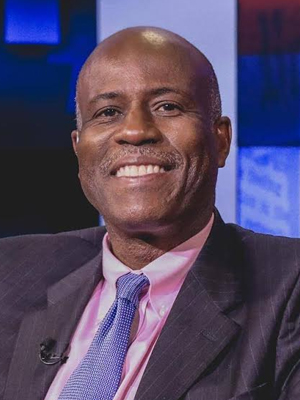 “In a few months, we will launch a rigorous month-long training program to teach aspiring Haitian journalists the tools they need to practice the craft of journalism,” Garry Pierre-Pierre (pictured), publisher of the New York-based Haitian Times, wrote Monday. “In this multimedia program, we will explore the core elements of a story, writing, reporting and the ethics of journalism. We will train participants to use their smartphones to create articles, videos and photos. At the end of each cohort, we will hire the best among them. Beyond meeting our immediate needs, this program will ultimately ensure that there is a pool of qualified talent for the Associated Press, The New York Times, Le Monde and a slew of international media outlets to rely on so that they can cover Haiti adequately. . . .”
“In a few months, we will launch a rigorous month-long training program to teach aspiring Haitian journalists the tools they need to practice the craft of journalism,” Garry Pierre-Pierre (pictured), publisher of the New York-based Haitian Times, wrote Monday. “In this multimedia program, we will explore the core elements of a story, writing, reporting and the ethics of journalism. We will train participants to use their smartphones to create articles, videos and photos. At the end of each cohort, we will hire the best among them. Beyond meeting our immediate needs, this program will ultimately ensure that there is a pool of qualified talent for the Associated Press, The New York Times, Le Monde and a slew of international media outlets to rely on so that they can cover Haiti adequately. . . .”
- In Chicago, “the hundreds of cameras that dot the city — and generate tens of millions of dollars a year for City Hall — have come at a steep cost for motorists from the city’s Black and Latino neighborhoods,” Emily Hopkins and Melissa Sanchez reported Tuesday for ProPublica. Their “analysis of millions of citations found that households in majority Black and Hispanic ZIP codes received tickets at around twice the rate of those in white areas between 2015 and 2019. The consequences have been especially punishing in Black neighborhoods, which have been hit with more than half a billion dollars in penalties over the last 15 years, contributing to thousands of vehicle impoundments, driver’s license suspensions and bankruptcies, according to ProPublica’s analysis. . . .”
- “The men had gotten along on Rikers Island, had even been friendly, but now they were face to face inside a jail cell — and a gang leader had just ordered them to fight,” Jan Ransom reported Wednesday for The New York Times. “Unable to refuse him, the men began to pummel one another while, outside the cell, other detainees jostled and cheered. . . . The New York Times obtained jail surveillance camera footage that was gathered by New York County Defender Services as part of its client’s petition to go free. Depicting the fight night and an attempted stabbing, the videos, along with court records and interviews, offer vivid glimpses of the lawlessness that has taken hold on Rikers Island, where violence has soared to levels not seen since the jails overflowed during the crack epidemic in the 1990s. . . .”
- “The purported leader of the violent neo-Nazi group the Atomwaffen Division was sentenced to seven years in federal prison Tuesday for conspiring to threaten Jews, Black people and journalists in Washington and two other states,” Mike Carter reported Tuesday for the Seattle Times. “Kaleb Cole, 25, was convicted in September of five federal felonies, including conspiracy, three counts of mailing threatening communications and one count of interfering with a federally protected activity. . . .”
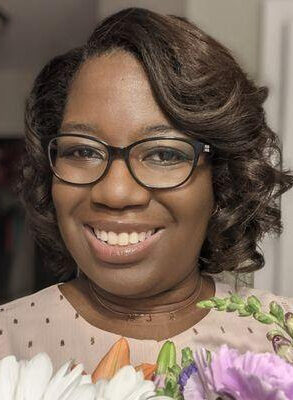 In St. Louis, “Aja Williams (pictured) will become Nine PBS’s new chief content officer,” the St. Louis American reported Wednesday. “Williams will provide leadership and oversight of the creation and distribution of Nine PBS content. She will anchor Nine PBS’s local content strategy in the identified needs of our community and ensure the look and feel of our content is engaging, contemporary, innovative, and optimized for audiences across multiple platforms. . . .”
In St. Louis, “Aja Williams (pictured) will become Nine PBS’s new chief content officer,” the St. Louis American reported Wednesday. “Williams will provide leadership and oversight of the creation and distribution of Nine PBS content. She will anchor Nine PBS’s local content strategy in the identified needs of our community and ensure the look and feel of our content is engaging, contemporary, innovative, and optimized for audiences across multiple platforms. . . .”
 CNN+, the streaming subscription service that is set to debut this spring, announced three weekday shows Wednesday, including “The Big Picture,” which “will offer subscribers an in-depth contextual look at the most important and interesting story of the day. Hosted by CNN senior national correspondent Sara Sidner (pictured), the program will zoom out and focus on the broader scope of today’s top news story and how various pieces of the puzzle connect. . . .”
CNN+, the streaming subscription service that is set to debut this spring, announced three weekday shows Wednesday, including “The Big Picture,” which “will offer subscribers an in-depth contextual look at the most important and interesting story of the day. Hosted by CNN senior national correspondent Sara Sidner (pictured), the program will zoom out and focus on the broader scope of today’s top news story and how various pieces of the puzzle connect. . . .”
- “Grid, a news site more than a year in the making, went live early Wednesday, with the goal of becoming a one-stop media shop for detailed renderings of the biggest stories of the day and why they matter,” Katie Robertson reported for the New York Times. Laura McGann, formerly of Vox, is running Grid’s D.C-based newsroom. “Mark Bauman, who covered war and genocide around the world for ABC News before becoming a top executive at National Geographic and the Smithsonian Institution, started Grid because, he said, he had become frustrated with the coverage of important issues.” Sara Fischer added for Axios, “On Wednesday, the company announced a slew of new editorial hires, including several people from Buzzfeed, Politico, CNN, ABC and other outlets.” However, Grid did not respond to inquiries sent to its address earmarked for the press asking how many hires were journalists of color.
 León Krauze (pictured), an anchor at KMEX, the Univision station in Los Angeles, will co-anchor Univision’s highly rated late-night network newscast, “Noticiero Univision Edición Nocturna,” “alongside world-renowned journalist Patricia Janiot,” Univision announced Wednesday. KMEX is “the No. 1 Station in the market for Local News regardless of language,” the network said.
León Krauze (pictured), an anchor at KMEX, the Univision station in Los Angeles, will co-anchor Univision’s highly rated late-night network newscast, “Noticiero Univision Edición Nocturna,” “alongside world-renowned journalist Patricia Janiot,” Univision announced Wednesday. KMEX is “the No. 1 Station in the market for Local News regardless of language,” the network said.
- “NBCUniversal’s Telemundo Enterprises is launching content brand Tplus on Peacock this fall in sync with the company’s exclusive Spanish-language coverage of the World Cup in Qatar,” Dade Hayes reported Thursday for Deadline. Hayes also wrote, “Series and features will range across scripted and unscripted genres and include projects from top production companies. Sports and music are also in the mix, with one docuseries centering on Colombian music star J Balvin and a film profiling soccer great Lionel Messi. . . . “
 Maiysha Kai (pictured) is the latest journalist to leave The Root for The Grio. “As theGrio’s new lifestyle editor, I’m looking forward to crafting a meticulously curated space where our readers can see themselves not only reflected but nurtured, affirmed, inspired and celebrated,” Kai wrote Tuesday.. “Together with an incredible team, we’ll explore how we live, love, dress, flex, learn, and thrive — and how we can do all of the above longer and healthier. . . .”
Maiysha Kai (pictured) is the latest journalist to leave The Root for The Grio. “As theGrio’s new lifestyle editor, I’m looking forward to crafting a meticulously curated space where our readers can see themselves not only reflected but nurtured, affirmed, inspired and celebrated,” Kai wrote Tuesday.. “Together with an incredible team, we’ll explore how we live, love, dress, flex, learn, and thrive — and how we can do all of the above longer and healthier. . . .”
 Kaizar Campwala (pictured, at left) has been named CEO of the Center for Investigative Reporting and Sumi Aggarwal (at right) chosen as editor in chief, the center announced Jan. 6. Aggarwal has been serving in the role in an interim capacity since March 2021. Campwala “joins CIR from the Walt Disney Co., where he oversaw ABC News’ digital and streaming news businesses, including ABC News Live, and expanded the news vertical on Hulu. . . .”
Kaizar Campwala (pictured, at left) has been named CEO of the Center for Investigative Reporting and Sumi Aggarwal (at right) chosen as editor in chief, the center announced Jan. 6. Aggarwal has been serving in the role in an interim capacity since March 2021. Campwala “joins CIR from the Walt Disney Co., where he oversaw ABC News’ digital and streaming news businesses, including ABC News Live, and expanded the news vertical on Hulu. . . .”
- The National Association of Black Journalists said Monday it is “disgusted by the allegations of harassment, gender discrimination, and gender-based pay disparities detailed in a lawsuit filed by former employees of the Black News Channel (BNC). Our Board members have spoken with current and former employees of BNC who corroborate many of the disturbing claims playing out in the court system. NABJ calls for immediate change within the culture of the organization.” BNC issued a statement Jan. 6 saying, ““Unprofessional and inappropriate conduct within our workplace environment is not tolerated (scroll down) . . . . We have investigated each of these claims thoroughly and will soon be filing our motion to dismiss based on several grounds. In addition, we are pursuing multiple actions related to the plaintiffs’ counsel’s pattern of ethical misconduct and are looking forward to our day in court.”
- “Jim Caldwell got canned after leading the Lions to consecutive 9-7 seasons — do you know how hard that is to do in Detroit?” Gary Washburn asked Wednesday in the Boston Globe. Washburn also wrote, “Caldwell is still looking for his next NFL job because the league only appears to feel comfortable with Black retread coaches as coordinators, not head coaches. Mike Tomlin has never had a losing season in Pittsburgh, but the question is does that reflect positively on other Black coaching candidates? For most teams, that’s a fast no. . . .”
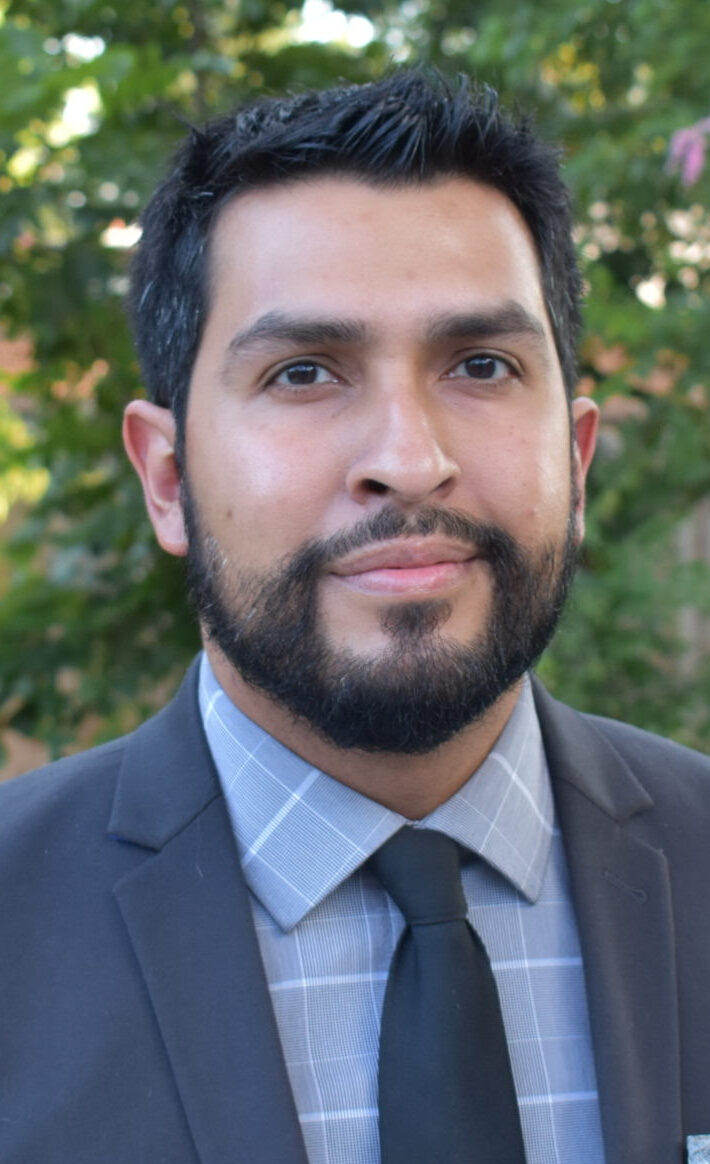 In a wide-ranging interview, Francisco Vara-Orta (pictured), the first director of diversity and inclusion for Investigative Reporters & Editors, told Janelle Salanga Thursday for Nieman Lab, “I feel like on the cusp of a pandemic, the insurrection, and climate change, that you cannot avoid these conversations [about diversity, belonging, equity and inclusion] anymore. Race and gender and class have to do with every single one of those issues. Let’s stop pretending that we can put our head in the sand anymore. We all have to confront it. And that’s uncomfortable for every single one of us, no matter whether you’re the aggrieved or you’ve been part of the benefits of the system. I think it’s important that IRE centers those conversations in our trainings and our work, and understand that is not activism, those are facts.”
In a wide-ranging interview, Francisco Vara-Orta (pictured), the first director of diversity and inclusion for Investigative Reporters & Editors, told Janelle Salanga Thursday for Nieman Lab, “I feel like on the cusp of a pandemic, the insurrection, and climate change, that you cannot avoid these conversations [about diversity, belonging, equity and inclusion] anymore. Race and gender and class have to do with every single one of those issues. Let’s stop pretending that we can put our head in the sand anymore. We all have to confront it. And that’s uncomfortable for every single one of us, no matter whether you’re the aggrieved or you’ve been part of the benefits of the system. I think it’s important that IRE centers those conversations in our trainings and our work, and understand that is not activism, those are facts.”
- “El Salvador’s leading news outlet, El Faro, said on Wednesday that the phones of a majority of its employees had been hacked with the spyware Pegasus, which has been used by governments to monitor human rights activists, journalists and dissidents,” Maria Abi-Habib reported Wednesday for The New York Times. “The revelation came just months after the American government blacklisted the Israeli firm that produces Pegasus, the NSO Group, in an attempt to curb the largely unregulated global market in spyware. . . .”
- “New York Times freelance journalist Jeffrey Moyo, 37, entered a not guilty plea in a case where he’s accused of smuggling two other New York Times journalists into the country last year,” South Africa’s News24 reported Tuesday. It is “a charge that even the government acknowledged at one point to be practically baseless,” the Times reported.
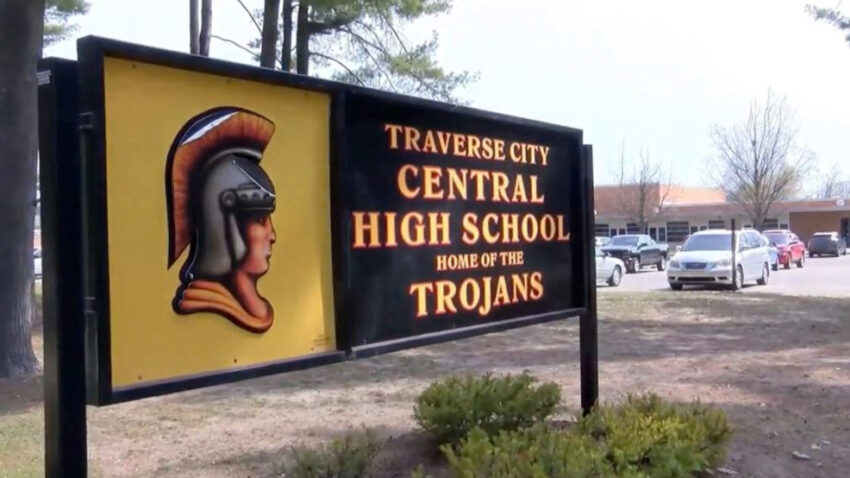
Editorial: Arm Our Children Against Racism
From the Record-Eagle, Traverse City, Mich., April 25, 2021
Really, it never was enough.
But today, it’s especially important for all adults in our young peoples’ lives to facilitate and reinforce a frank discussion about racism, discrimination and equality. Leading by example simply isn’t enough.
Our young people are our only hope of eradicating the kind of heinous bigotry we witnessed this week. And they need our help.
The discussions between local high school students exposed last week from a private Snapchat group titled “Slave Trade” are some of the most stomach-turning we’ve seen. The kinds of rhetoric we expect to witness in the darkest corners of the internet.
But these venomous chats occurred in our community, tapped out by the thumbs of teens, targeting their classmates. These were teens wielding hate against one another.
If the events of the past few years — the unmasking of racist behavior by adults who now feel comfortable with their public bigotry — weren’t enough of a warning to us all, last week should serve as an alarm.
We must change. Our world must change.
And that change begins with how we talk to our children about racism.
Young people growing up today face challenges and influences not experienced by any previous generation. They face constant indoctrination through social media channels that have become pervasive forces in their lives.
Don’t assume our children were born with all the tools they need to confront hate.
They need our help to rise as a generation of people who not only reject hateful behavior, but who have the courage to stand against it. Even if that means they’re the only one among a group standing for what’s right.
That kind of courage can be taught. And that teaching begins with the backing of adults who they know will stand behind them.
These are messages our children need to hear from every adult in their lives.
Start with clear conversations about the things that simply aren’t OK. They aren’t OK to say publicly or in private groups or on social media. They’re the kind of discussions that constitute violence.
Teach our children that their silence in groups where others spout bigotry is a form of affirmation, even encouragement to those who espouse hateful rhetoric. Teach our children not to allow their silence to become part of the violence.
Our children represent our nation’s greatest hope of outgrowing racism and bigotry, and we all need to take part in guiding them.
Support Journal-isms
To subscribe at no cost, please send an email to journal-isms+subscribe@groups.io and say who you are.
Facebook users: “Like” “Richard Prince’s Journal-isms” on Facebook.
Follow Richard Prince on Twitter @princeeditor
Richard Prince’s Journal-isms originates from Washington. It began in print before most of us knew what the internet was, and it would like to be referred to as a “column.” Any views expressed in the column are those of the person or organization quoted and not those of any other entity. Send tips, comments and concerns to Richard Prince at journal-isms+owner@
View previous columns (after Feb. 13, 2016).
View previous columns (before Feb. 13, 2016)
- Diversity’s Greatest Hits, 2018 (Jan. 4, 2019)
- Book Notes: Is Taking a Knee Really All That? (Dec. 20, 2018)
- Book Notes: Challenging ’45’ and Proudly Telling the Story (Dec. 18, 2018)
- Book Notes: Get Down With the Legends! (Dec. 11, 2018)
- Journalist Richard Prince w/Joe Madison (Sirius XM, April 18, 2018) (podcast)
- Richard Prince (journalist) (Wikipedia entry)
- February 2018 Podcast: Richard “Dick” Prince on the need for newsroom diversity (Gabriel Greschler, Student Press Law Center, Feb. 26, 2018)
- Diversity’s Greatest Hits, 2017 — Where Will They Take Us in the Year Ahead?
- Book Notes: Best Sellers, Uncovered Treasures, Overlooked History (Dec. 19, 2017)
- An advocate for diversity in the media is still pressing for representation, (Courtland Milloy, Washington Post, Nov. 28, 2017)
- Morgan Global Journalism Review: Journal-isms Journeys On (Aug. 31, 2017)
- Diversity’s Greatest Hits, 2016
- Book Notes: 16 Writers Dish About ‘Chelle,’ the First Lady
- Book Notes: From Coretta to Barack, and in Search of the Godfather
- Journal-isms’ Richard Prince Wants Your Ideas (FishbowlDC, Feb. 26, 2016)
- “JOURNAL-ISMS” IS LATEST TO BEAR BRUNT OF INDUSTRY’S ECONOMIC WOES (Feb. 19, 2016)
- Richard Prince with Charlayne Hunter-Gault, “PBS NewsHour,” “What stagnant diversity means for America’s newsrooms” (Dec. 15, 2015)
- Book Notes: Journalists Follow Their Passions
- Book Notes: Journalists Who Rocked Their World
- Book Notes: Hands Up! Read This!
- Book Notes: New Cosby Bio Looks Like a Best-Seller
- Journo-diversity advocate turns attention to Ezra Klein project (Erik Wemple, Washington Post, March 5, 2014)
When you shop @AmazonSmile, Amazon will make a donation to Journal-Isms Inc. https://t.co/OFkE3Gu0eK
— Richard Prince (@princeeditor) March 16, 2018

